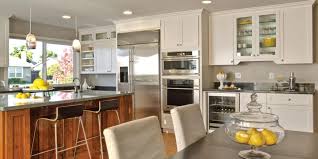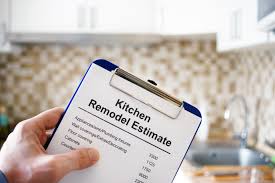Determining a Kitchen Remodeling Budget
How Do I Budget My Kitchen Renovation?
Your budget is hugely important. It shapes what’s possible with your kitchen, from the materials you choose to the professional help you hire.
For the average, medium-sized kitchen remodel, $20,000 to $50,000 is a reasonable starting point for your budget. Your remodeling budget will depend on things like: where you live, home value, product selection and project scope. Do you want to gut your whole kitchen, including moving walls and relocating utilities? It will be costlier than simply replacing appliances and cabinets in the existing layout.
How you divvy up your budget will depend on your household’s needs. Here is an example budget breakdown:
- Cabinets: 29%
- Appliances: 17%
- Install: 13%
- Countertop: 11%
- Lighting & Electrical: 10%
- Plumbing: 6%
- Flooring: 5%
- Backsplash: 5%
- Miscellaneous: 4%
In order to prepare for unexpected expenses, we recommend setting aside 10-20% of your total budget.

Factor in Extraneous Costs
It’s easy to forget that the actual physical costs of the items going into the kitchen and the labor of those doing the work aren’t the only costs you’ll need to account for during your kitchen remodel. You will also need to budget for eating out more often while the kitchen is being worked on, as you won’t be able to cook during most of the renovation, and for part of it you may not even be able to store much food at home.
Another cost you may want to consider is accommodations. Many people don’t like to stay at home while renovations are being done, and instead find a hotel to be more comfortable during that time. If you choose to do so, you may want to look into some local extended stay hotels and add those prices into your budget.
Know the details of how you will pay for this project.
There are many ways to pay for a kitchen remodel, but home equity loans are the most popular because they’re tax deductible. Other options include refinancing, taking out a personal loan or taking a loan against a retirement plan.
Even if you have cash in hand, borrowing money at a low interest rate may be smarter than pulling your money from an investment account getting a higher return.
If you’re getting a loan, factor in costs like interest and loan origination fees. Also, find out when you’ll get the funding from your loan. You’ll need to make deposits with your contractors, and you’ll need to pay for materials up front.
Avoid extras. Don’t be tempted to deviate from your budget mid-project.
If you catch yourself saying “It would be so great if we added (fabulous kitchen feature here),” stop yourself. This is how budgets get blown. Go look at that remodeling budget you made in step 1, and repeat the number like a mantra. You can live without the little extras
MAKE A PLAN
The first step in any remodeling project is to make a plan. The better defined your plan, the more accurate your budget will be. If you’re capable with a computer or scale and pencil, you can sketch the space yourself.
You’ll want to measure your existing space as accurately as possible and then sketch your new layout, showing the locations of the major functional elements like the appliances and sink.
The first phase of my kitchen design process involves developing a conceptual plan based on accurate measurements. Once our layout is defined, I put together a budget and scope of work. I need the plan so I can estimate the quantities I need for materials, fixtures, flooring, and other design elements.

Three Remodeling Levels
When embarking on a kitchen remodel “first prepare a realistic budget and then search for someone who will work with you to achieve your dream kitchen
Low-Range Estimates
“Low-range renovations,” says Lavallee, “run from approximately $100 to $125 per square foot and will brighten up a kitchen without making any major changes in the physical space. This can include door replacements, installing new laminate or basic tile countertops, and other items.”
Mid-Range Estimates
Lavallee goes on to say, “At $200 to $250 per square foot, a mid-range kitchen remodel is a step up in both price and quality. The customer has more choices and will see a difference in the higher-end products that are available within this price range including better tile, Corian-like countertops, or vinyl flooring.”
High-End Estimates
Lavalle concludes by saying that “When the price is not a factor and customers have a higher budget of $300 or more per square foot, this is generally a full-scale renovation or ‘gut to the studs.’ With a bigger budget comes an endless array of choices and prices to match that will create an entirely reconfigured space outfitted with the latest high-end products including new plumbing, countertops, flooring, hardware, woodwork, and lighting.”